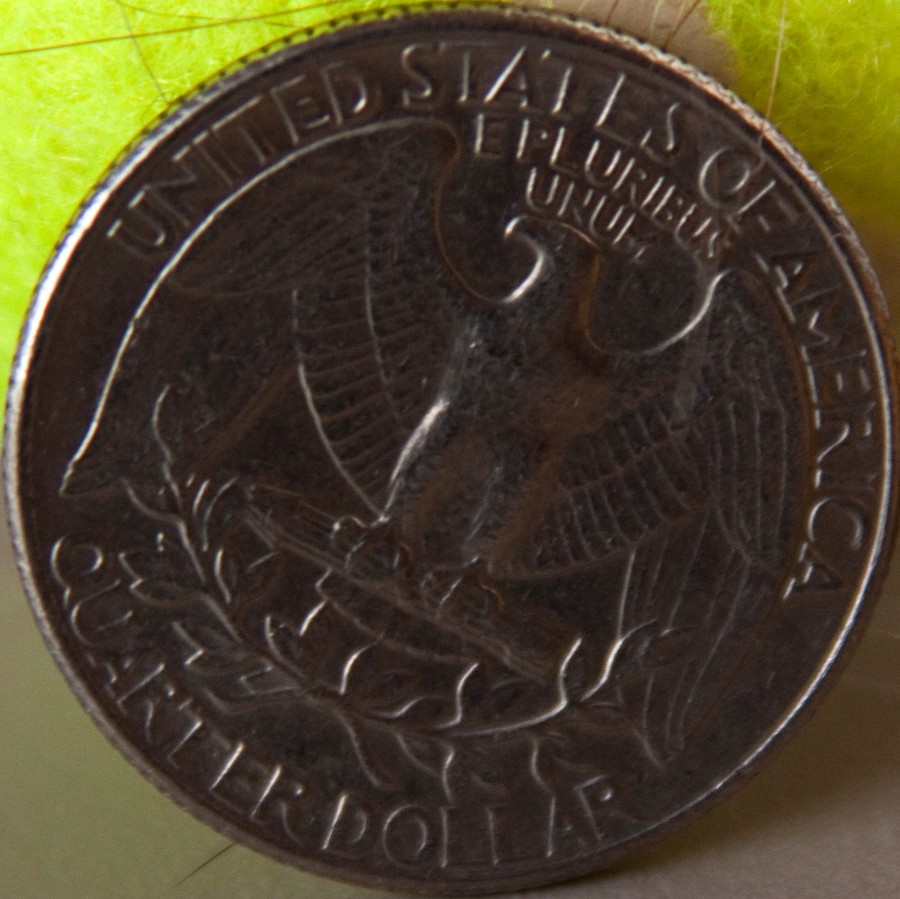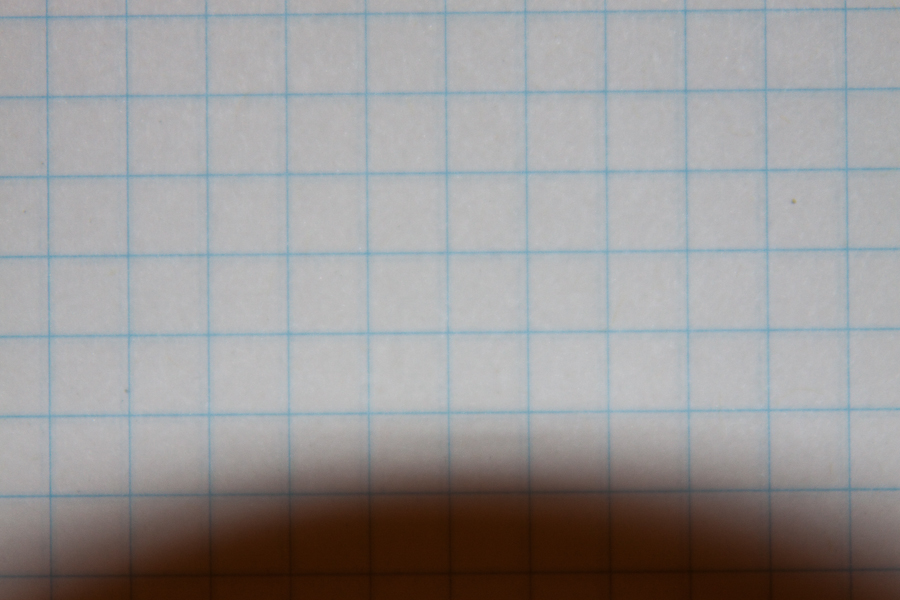How Macro is This Lens?
Allegedly my Tamron zoom lens has a 1:3 macro capability. That is, at maximum telephoto and minimum focusing distance (0.49 meters) objects should be imaged on the sensor at 1/3 their actual size. Let’s check that out.
The sensor in a Canon EOS 50D is 22.3mm by 14.9mm. A U.S. quarter has a a diameter of 24.26 mm. I extend the lens to 300mm and switch it to manual focus. Then I set the focus on the lens to 0.49m (the minimum). I move the camera until the quarter comes into focus and snap.

At 1:3 the quarter should occupy 24.26/3 mm == 8.087 mm. 8.087 mm/ 22.3mm = 0.36, just a tad more than a third the width of the picture. Actually it could be a little smaller than that if I didn’t shoot it head on. The raw image is 4752 pixels wide, so the quarter should be about 1710 pixels wide. Let’s open it up in Photoshop and find out.
Surprisingly, after cropping down to just the quarter, the image is 1923 pixels by 1921 pixels. A quarter is a circle so it should be as wide as tall, which means my measurements are at least +/-2 pixels off. However, it’s still way bigger than it should be. What happened?
The most likely answer seems to be a confusion between area and linear size. Perhaps the quarter should appear on the sensor at 1/3 of its area rather than 1/3 of its diameter. Let’s run the numbers and see if that works out.
A quarter’s area is π * 1.213 * 1.213 cm2 == 4.622 cm2. That’s larger than the sensor is so at 1:1 it wouldn’t even fit. One third of that is 1.54 cm2. Divide by π and take the square root and the radius on the sensor should be 0.7 cm. There are about 2131 pixels per cm on the sensor (counting horizontally or vertically) so this works out to 1491.6 pixels. Double that to get the diameter and we should see 2983 pixels across our quarter, so we’re missing a thousand.
Where’s my mistake?
Let’s try the other direction. The quarter’s radius is 961 pixels on the sensor. This works out to .451cm. That means the area is .64 cm2. The real area of the quarter is 4.622 cm2 so we’re at about 1:7, not 1:3.
Let’s try this a different way. Here’s a picture of some graph paper taken at full zoom from minimum range:

This particular paper has 5 squares per linear inch, so they’re about 11 squares across and about 7.5 squares vertically. That’s a 1.46667 ratio of width to height. The camera sensor is 22.3mm * 14.9mm or 1.4966 ratio, well within my margin of error so that much checks out.
The image is then 11 squares * 7.5 squares * 0.2 inches/square * 0.2 inches/square * 2.54 cm/in * 2.54 cm/in = 21.29 cm2. The sensor is 3.3 cm2. So going by area the macro ratio is 1:6.45, roughly the same as I got with the quarter. That’s reassuring.
Horizontally the paper is 5.588 cm. 2.23 cm / 5.588 cm ~= 2 : 5, still better than 1:3. Vertically we have 1.49 cm / 3.8 cm ~= 2 : 5.
What about the diagonal? Using the Pythagorean theorem we calculate that diagonally the sensor is 2.68 cm. The graph paper is 6.76 cm diagonally. But as I expected that works out to 1 : 2.5 again. I just can’t figure a way to make the numbers come out 1:3. Maybe the manufacturer just rounds up? But that’s hard to believe when 1 : 2.5 is a better number than 1:3, and 1:2 is an even better one.
The numbers I’m getting are all consistent. If there’s an error here, it’s a systematic one. Is it possible the field of view crop comes into play? Maybe the lens is 1:3 on a full frame 35mm camera like an EOS 5D but ~1:2.5 on a smaller sensor like the 50D? Hmm, the field of view crop is 1.6x. 1.6 / 3 = 0.5333 so the extra magnification should turn the 1:3 macro into a 1:2 macro. I’m still not getting 1:2.5 but maybe we’re getting somewhere. Still, I don’t really buy that. The lens doesn’t change just because the sensor size does. The magnification on the sensor should be the same regardless of the sensor size. You’ll just see more or less of the circle projected by the lens.
At this point, my best guess is that this lens has a macro ratio closer to 1:2.5 than 1:3. That’s about the last thing I expected. Manufacturers often overstate their specs, but it’s rare to understate them. Does anyone see a flaw in my tests or my calculations?
Update: Popular photography agrees with me: “At the uniform close-focusing distance of approximately 16 inches (tested), maximum magnification ratios ranged from 1:10.36 at 28mm to 1:2.33 at 300mm — significantly more power than Tamron’s 1:3 published spec.”
